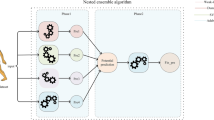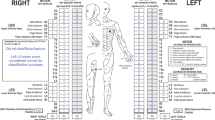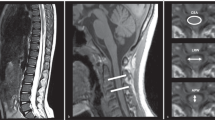Abstract
Patient evaluation using Zancolli's classification for cervical cord injuries uses easily understood criteria and accurately defines the state of disability in Frankel grade A or B patients. However, this classification cannot be used in Frankel grade C patients even though they also cannot walk. We compared the Zancolli classification with American Spinal Injury Association (ASIA) motor scores in evaluating self-care in Frankel grade C patients. The Zancolli classification was found to correlate closely with the ASIA motor score. The threshold of ability to perform self-care in areas such as urinary toileting and wheelchair mobility occurred approximately between C6A and C6B 1 in the Zancolli classification in Frankel grade A and B patients and at the level of about 30 points in the ASIA motor score in Frankel grade C patients. The ASIA motor score is helpful in defining functional motor status in Frankel grade C patients with cervical spinal cord injuries.
Similar content being viewed by others
Log in or create a free account to read this content
Gain free access to this article, as well as selected content from this journal and more on nature.com
or
Author information
Authors and Affiliations
Rights and permissions
About this article
Cite this article
Toh, E., Arima, T., Mochida, J. et al. Functional evaluation using motor scores after cervical spinal cord injuries. Spinal Cord 36, 491–496 (1998). https://doi.org/10.1038/sj.sc.3100606
Published:
Issue date:
DOI: https://doi.org/10.1038/sj.sc.3100606
Keywords
This article is cited by
-
Eye-tracking computer systems for inpatients with tetraplegia: findings from a feasibility study
Spinal Cord (2015)
-
Surgical treatment for injuries of the middle and lower cervical spine
International Orthopaedics (2006)



